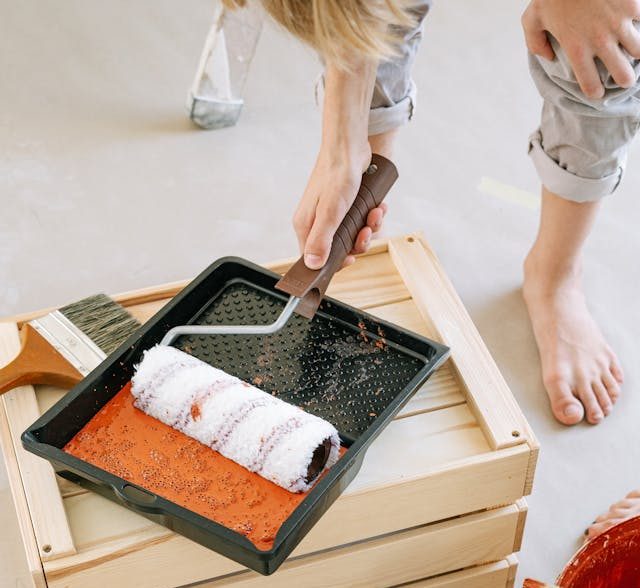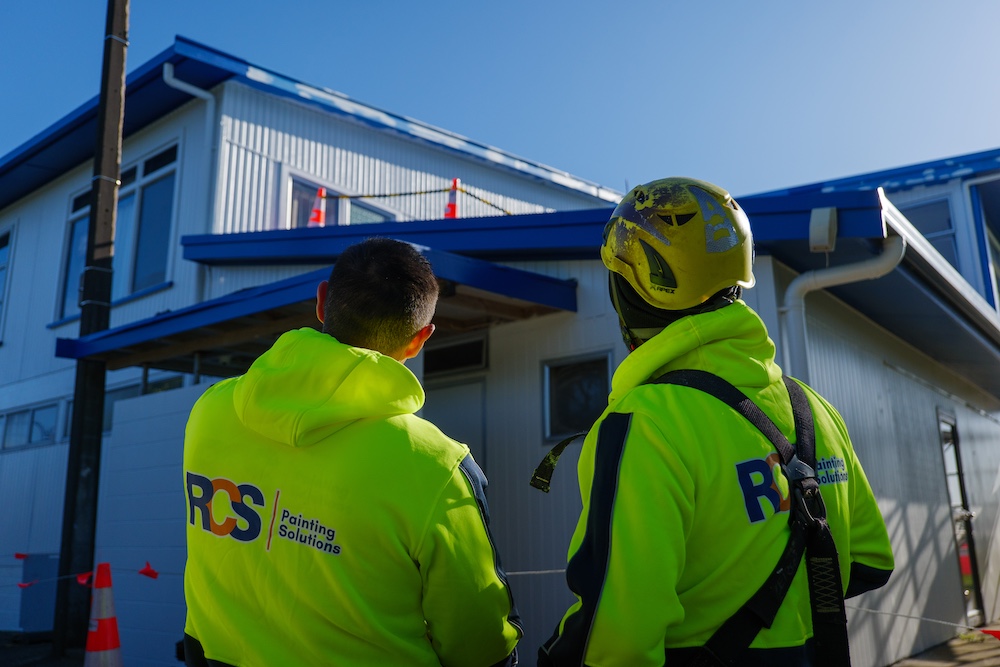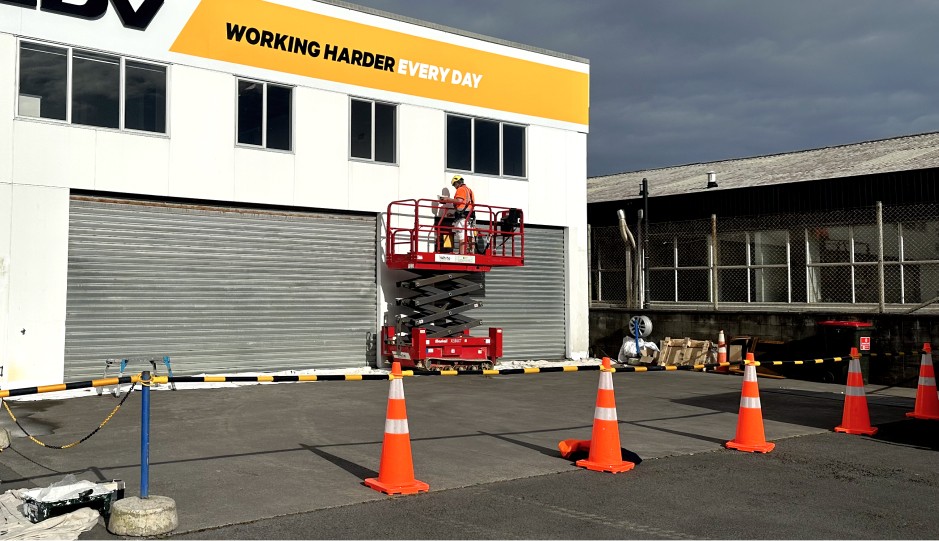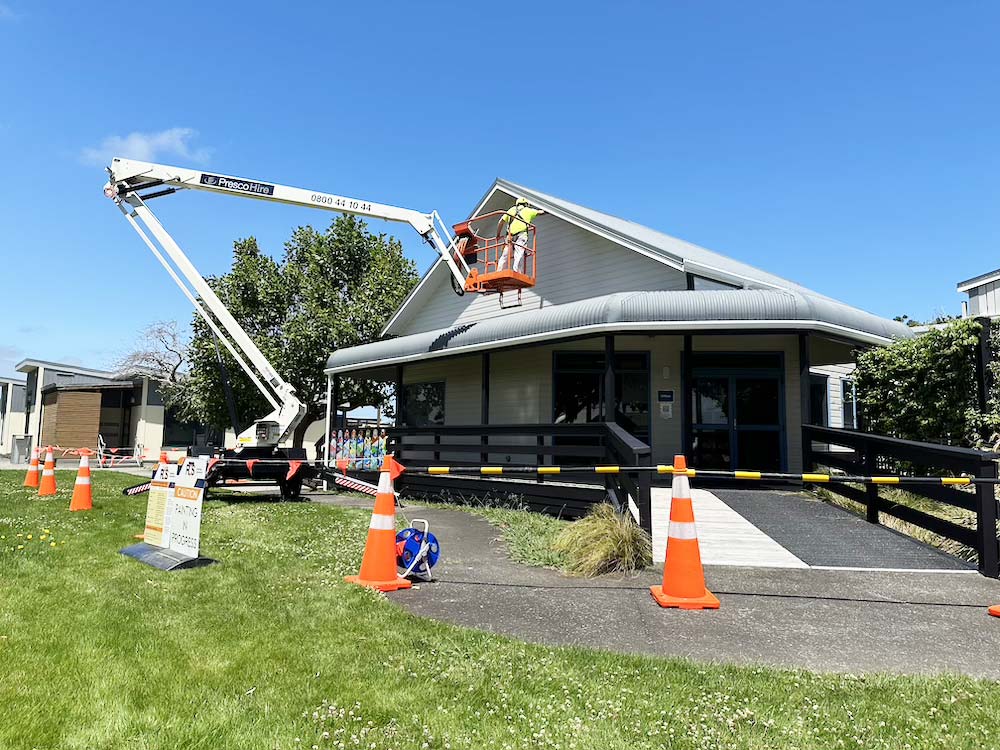Painting your home can be a rewarding DIY project, but it’s essential to prioritise safety to avoid hazards. Whether you’re a first-time painter or an experienced DIY enthusiast, taking the right precautions can make all the difference. This article will walk you through five crucial tips to ensure your painting project is both successful and safe.
Key Takeaways
- Always wear gloves and coveralls to protect your skin and clothing from paint and chemicals.
- Use safety goggles to shield your eyes from paint splatters and harmful fumes.
- A respirator mask is essential for preventing the inhalation of toxic fumes and particles.
- Drop cloths are crucial for protecting your floors and furniture from paint spills and splatters.
- Ensure your ladder has safety features like non-slip steps and a stabilising bar to prevent accidents.
1. Gloves and Overalls
When embarking on a home DIY painting project, don’t underestimate the mess factor. Wearing gloves and coveralls will keep your skin and clothes paint-free, ensuring you stay clean throughout the process. Accidents can happen to anyone; for instance, a can of paint might tip over, but with the right gear, you can emerge unscathed.
Essential Tips for Using Gloves and Overalls
- Choose the Right Gloves: Opt for latex or nitrile gloves, or even nitrile-coated gardening gloves. Avoid one-size-fits-all options and go for a more tailored fit to maintain dexterity.
- Use of Disposable Overalls: Consider using disposable protective coverall suits, especially those designed for spray painting. They offer excellent protection and can be discarded after use.
- Barrier Creams: If gloves are not your preference, barrier creams can create a protective layer on your skin, shielding it from toxins and solvents.
Remember, investing in proper protective gear is crucial for a safe and clean painting experience.
2. Safety Goggles
When engaging in home DIY painting projects, it’s crucial to wear eye protection to prevent any accidents. Safety goggles are essential, especially if you’re painting above your head or working with materials that can create dust or fumes. These goggles shield your eyes from harmful substances and prevent irritation or injury.
Consider the following tips when using safety goggles:
- Ensure the goggles fit snugly and comfortably.
- Choose goggles that provide a clear, unobstructed view.
- Regularly clean the goggles to maintain visibility.
Always prioritise your eye safety to avoid potential hazards and ensure a smooth painting experience.
3. Respirator Mask
When working with paints, especially those that are solvent-based or aerosolised, wearing a respirator mask is crucial. These masks do not filter dangerous fumes but do a good job with particulates. Ensure you use a snug-fitting NIOSH-approved respirator with the correct canister filters and face coverage.
- Read the Labels: Always read the labels on your paint products to understand the necessary precautions.
- Ventilate Properly: Respirators are not a good substitute for adequate ventilation. Make sure your workspace is well-ventilated.
- Check the Fit: A poorly fitting mask won’t provide the protection you need. Make sure it fits snugly against your face.
If you can smell the paint through your mask or in your workspace, it’s getting into your lungs and you need to take steps to protect yourself more fully.
4. Drop Cloths
Using drop cloths is essential to protect your floors and furniture from paint drips and spills. Opt for canvas drop cloths instead of plastic ones, as they stay in place better and are less slippery. This will help you maintain a safer working environment.
Steps to Use Drop Cloths Effectively
- Lay down the drop cloths before you start painting.
- Ensure the cloths cover all areas where paint might drip or spill.
- Regularly check and adjust the cloths to keep them in place.
Proper use of drop cloths can significantly reduce the risk of accidents and make your painting project more efficient.
5. Ladder with Safety Features
Surprisingly, ladder safety is something easily overlooked. Every piece of equipment will eventually get old and wear out, so it may be a good idea to see if that favourite ladder wobbles. This will prevent possible falls and injuries. Plus, it will ensure that containers of paint do not tumble over while working. While using a safe ladder, make sure to not lean too far on the ladder to reach certain spots. It is best to simply climb down, move the ladder, and climb back up to paint.
Erecting the Ladder
- Clear the area around the ladder from any clutter. Make sure that no electrical cords or wire leads are closed.
- If the ladder needs to be in front of a door, consider locking the door to prevent surprise openings.
- If the ladder is in a high-traffic area, draw attention to this fact in the house—a hand-written sign would do.
- Make sure the floor is even and stable. Avoid wet or slippery surfaces.
- Always support the ladder at four points.
Using Step-Ladders Safely
Step ladders are very often both a central part of a paint job, but also a key danger area.
Here are some tips on how to minimize the likelihood of a ladder-related accident:
- Inspect the ladder first.
- Take time to check the condition of the ladder both before and after use.
- Check that the ladder is sufficiently robust to support your weight.
- Make sure the steps are free of oil, wet paint, mud, or any other potentially slippery substance.
Climbing the Ladder
- Wear suitable shoes—no heels, barefoot is not good, nor are most sandals.
- Never climb onto wet or slippery steps, make sure they are dry.
- Never overstretch—do not climb beyond the last three steps of a ladder.
- Keep your shoulders between the rails and don’t over-reach—move the ladder instead.
- Always keep 3-point contact with the ladder.
- If your ceilings are high, but your ladder is too small, don’t try to overreach yourself—renting or borrowing a suitable ladder is much safer.
Safety Tip: Don’t let your children climb up the ladder: prevent access at the end of the day if you have to, or fold it up after use.
Conclusion
In conclusion, ensuring safety while undertaking a home DIY painting project is paramount. By following the five essential tips outlined in this article, you can significantly reduce the risk of accidents and create a secure environment for your painting activities. From gathering the right safety equipment to preparing the painting area and avoiding paint waste, each step plays a crucial role in safeguarding your health and well-being. Remember, a successful painting project is not just about achieving a beautiful finish but also about maintaining a safe and hazard-free workspace. Happy painting!
Ready to work the Professionals? Get in touch with us today.
Frequently Asked Questions
Wearing gloves and coveralls helps protect your skin and clothes from paint splatters and spills, reducing the risk of skin irritation and damage to your clothing.
Use safety goggles that provide a snug fit and cover your eyes completely to protect them from paint splashes and debris.
A respirator mask is highly recommended, especially when using paints that emit strong fumes or when working in poorly ventilated areas to protect your respiratory system.
Drop cloths protect your flooring and furniture from paint spills and drips, reducing the risk of slipping on wet paint and making cleanup easier.
Choose a ladder with non-slip steps, a sturdy build, and safety locks to ensure stability while you work at heights.
Clear the area of any obstacles, cover furniture and floors with drop cloths, ensure proper ventilation, and have all your safety gear ready before beginning your painting project.





